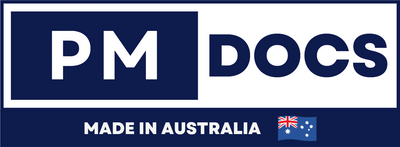How To Get ISO Certification In Australia (Step-by-Step) ?
Mastering Quality: Your Step-by-Step Guide To ISO Certification In Australia
In today's increasingly global and competitive market, demonstrating a commitment to quality, efficiency, and customer satisfaction is paramount. For Australian businesses, achieving ISO certification is a powerful way to signal this commitment, opening doors to new opportunities and fostering continuous improvement.

While the journey to ISO certification might seem daunting, it's a structured process that, when approached systematically, is entirely achievable. This comprehensive guide will demystify the process, providing Australian businesses with a clear, step-by-step roadmap to obtaining ISO certification.
What Is ISO Certification?
ISO (International Organization for Standardization) is an independent, non-governmental international organisation that develops standards to ensure the quality, safety, and efficiency of products, services, and systems. ISO certification, therefore, is a third-party endorsement that your business management system meets the requirements of a specific ISO standard. It's not a product certification, but rather a certification of your processes and systems.
Why Get ISO Certified In Australia? The Benefits Are Clear
For Australian businesses, embracing ISO standards brings a multitude of strategic advantages:
-
Enhanced Credibility and Reputation: ISO certification is globally recognised, instantly boosting your organisation's credibility and demonstrating a commitment to international best practices.
-
Competitive Advantage: Many tenders and large supply chain contracts in Australia now demand ISO certification. It can be the decisive factor that wins you business over competitors.
-
Improved Operational Efficiency: Implementing an ISO management system forces you to streamline processes, reduce waste, and identify areas for improvement, leading to greater productivity and cost savings.
-
Increased Customer Satisfaction: A structured approach to quality management ensures consistency in service and product delivery, directly contributing to higher customer satisfaction and loyalty.
-
Better Risk Management: ISO standards provide frameworks for identifying, assessing, and mitigating risks, leading to a more resilient and sustainable business operation.
-
Employee Engagement and Morale: Clear processes, defined roles, and a commitment to continuous improvement can empower employees and foster a more positive work environment.
-
Access to New Markets: ISO certification often acts as a passport to international markets, demonstrating compliance with globally accepted standards.
- Stronger Supplier Relationships: Having a certified management system can improve your ability to select and manage suppliers, ensuring quality throughout your value chain.
Common ISO Standards For Australian Businesses
While there are thousands of ISO standards, a few are particularly relevant and commonly pursued by Australian businesses. Here's a quick overview:
| ISO Standard | Primary Focus Area | Key Benefits for Australian Businesses |
|---|---|---|
| ISO 9001:2015 | Quality Management System (QMS) | Most popular standard; ensures consistent quality, customer satisfaction, and continuous improvement. Essential for tenders. |
| ISO 14001:2015 | Environmental Management System (EMS) | Demonstrates environmental responsibility, reduces waste, ensures regulatory compliance, and enhances green credentials. |
| ISO 45001:2018 | Occupational Health & Safety Management System (OHSMS) | Improves workplace safety, reduces incidents, ensures compliance with Australian WHS laws, and protects employees. |
| ISO 27001:2022 | Information Security Management System (ISMS) | Protects sensitive information, ensures data privacy, mitigates cyber risks, and builds trust with clients regarding data handling. |
| ISO 22000:2018 | Food Safety Management System (FSMS) | Ensures food safety throughout the supply chain, crucial for food manufacturers, processors, and distributors. |
Your Step-by-Step Guide To ISO Certification In Australia
Obtaining ISO certification involves a systematic approach, often broken down into the following stages:
Step 1: Understand Your Needs & Commit
-
Identify Your "Why": Clearly define the business objectives for seeking certification. Is it for a specific tender, market access, internal improvement, or all of the above?
-
Choose the Right Standard(s): Based on your objectives, industry, and operations, select the most relevant ISO standard(s) (e.g., ISO 9001, ISO 14001, ISO 45001).
- Secure Management Commitment: This is crucial. Without the full support and resources from top management, the implementation process will struggle. Appoint a management representative to champion the project.
Step 2: Conduct a Gap Analysis (Pre-Assessment)
-
Assess Your Current State: This involves comparing your existing processes, documentation, and practices against the requirements of your chosen ISO standard.
-
Identify Gaps: Pinpoint areas where your current system falls short of the standard's requirements. This can be done internally or with the help of an external ISO consultant.
- Develop an Action Plan: Based on the gaps identified, create a detailed plan outlining what needs to be changed or developed to meet the standard.
Step 3: Develop & Document Your Management System
-
Design Your System: Based on your gap analysis, develop or refine your management system. This includes defining policies, objectives, processes, procedures, and responsibilities.
- Document Everything: Create the necessary documentation – manuals, procedures, work instructions, forms, and records. Remember, the system should be tailored to your business, not just a generic template. The standard requires you to "say what you do, do what you say, and prove it."
Step 4: Implement & Train
-
Put the System into Practice: Roll out the new or revised processes across your organisation. Ensure that employees understand their roles and responsibilities within the new system.
-
Employee Training: Conduct comprehensive training for all relevant staff on the new procedures, policies, and the overall management system. Awareness is key to successful implementation.
- Monitor and Collect Data: Begin collecting data and records as per your documented procedures. These records will serve as evidence during the audit.
Step 5: Conduct Internal Audit
-
Self-Assessment: Once your system has been implemented and operational for a reasonable period (typically 3-6 months), conduct an internal audit. This is a critical step to ensure your system is effective and compliant.
-
Identify Non-Conformities: Your internal auditors (who should be trained and independent of the areas they are auditing) will check if your actual practices align with your documented procedures and the ISO standard. They will identify any non-conformities or areas for improvement.
- Corrective Actions: Address any non-conformities found during the internal audit. This involves investigating the root cause and implementing corrective actions to prevent recurrence.
Step 6: Management Review
-
Top Management Review: The leadership team must formally review the performance of the management system at planned intervals.
-
Review Inputs: This review should consider internal audit results, customer feedback, process performance, non-conformities, corrective actions, status of objectives, changes affecting the system, and recommendations for improvement.
- Review Outputs: The review should result in decisions and actions related to improvement opportunities, resource needs, and necessary changes to the management system.
Step 7: Choose an Accredited Certification Body
- Crucial Step for Australia: In Australia, it is vital to choose a certification body that is accredited by the Joint Accreditation System of Australia and New Zealand (JAS-ANZ). JAS-ANZ provides confidence and assurance that certified organisations meet the highest standards.
- Research & Quotes: Contact several JAS-ANZ accredited certification bodies operating in your region. Request proposals and compare their services, audit fees, timelines, and experience in your industry.
- Contract: Once you've selected a certification body, sign a contract for the certification audit.
Step 8: Certification Audit (Stage 1 & Stage 2)
The certification body will conduct a two-stage audit:
-
Stage 1 Audit (Documentation Review):
- An auditor will review your documented management system (manuals, procedures, policies) to ensure it meets the requirements of the chosen ISO standard.
- They will also assess your readiness for the Stage 2 audit and provide feedback on any major non-conformities or areas needing attention.
- An auditor will review your documented management system (manuals, procedures, policies) to ensure it meets the requirements of the chosen ISO standard.
-
Stage 2 Audit (Main Audit):
- This is a comprehensive on-site audit where the auditor verifies that your documented system is implemented effectively in practice.
- They will interview staff, observe processes, examine records, and assess whether your organisation is "doing what it says it does."
- Any significant non-conformities must be addressed and formally closed out before certification can be granted.
- This is a comprehensive on-site audit where the auditor verifies that your documented system is implemented effectively in practice.
Step 9: Receive Your ISO Certification!
-
Successful Audit: Upon successful completion of the Stage 2 audit and clearance of any non-conformities, the certification body will recommend your organisation for certification.
- Certification Award: You will receive your official ISO certificate, which is typically valid for three years.
Step 10: Maintain & Continually Improve
-
Surveillance Audits: To maintain your certification, your chosen certification body will conduct annual surveillance audits. These shorter audits ensure your management system continues to be effective and compliant.
-
Re-certification Audit: Before your three-year certificate expires, a re-certification audit (similar to a Stage 2 audit) will be conducted.
- Continuous Improvement: ISO is not a one-off event. Continual improvement is a core principle. Regularly review your system, conduct internal audits, and seek opportunities to enhance performance.
Key Considerations For Australian Businesses
-
JAS-ANZ Accreditation: Reiterate the importance of choosing a JAS-ANZ accredited certification body. Unaccredited certificates hold little to no value commercially.
-
Small Business Support: Don't be discouraged if you're a small to medium-sized enterprise (SME). Many consultants and certification bodies specialise in helping smaller Australian businesses achieve certification efficiently.
-
Local Expertise: Engaging an Australian ISO consultant can provide invaluable local knowledge of regulations, industry best practices, and the Australian business landscape.
- Cost vs. Investment: View the cost of ISO certification not as an expense, but as a strategic investment in your business's future, efficiency, and market competitiveness.
The Cost of ISO Certification in Australia
The cost of ISO certification varies significantly based on several factors:
-
Size and Complexity of Your Organisation: Larger organisations with more complex operations will typically incur higher costs.
-
Chosen ISO Standard(s): Certifying multiple standards simultaneously or more complex standards (like ISO 27001) can increase costs.
-
Existing Systems: If you already have robust management systems in place, the cost of bringing them up to standard will be lower.
-
Consultant Fees: The cost of engaging an ISO consultant to help develop and implement your system. This is optional but highly recommended for many.
-
Certification Body Fees: The fees charged by the JAS-ANZ accredited certification body for the audits (Stage 1, Stage 2, and subsequent surveillance audits).
- Internal Resources: The time and effort your own staff will dedicate to the project.
It's advisable to get detailed quotes from both ISO consultants (if using one) and multiple JAS-ANZ accredited certification bodies early in the process to budget effectively.
Conclusion
Achieving ISO certification is a journey that demands commitment, planning, and systematic execution. For Australian businesses, it's a strategic move that delivers tangible benefits, from enhanced credibility and market access to improved efficiency and stronger risk management.
By following this step-by-step guide and focusing on genuine implementation rather than just ticking boxes, your Australian business can successfully navigate the path to ISO certification, unlocking new opportunities and cementing your position as a leader in your industry. Start your journey today – the rewards are well worth the effort.




